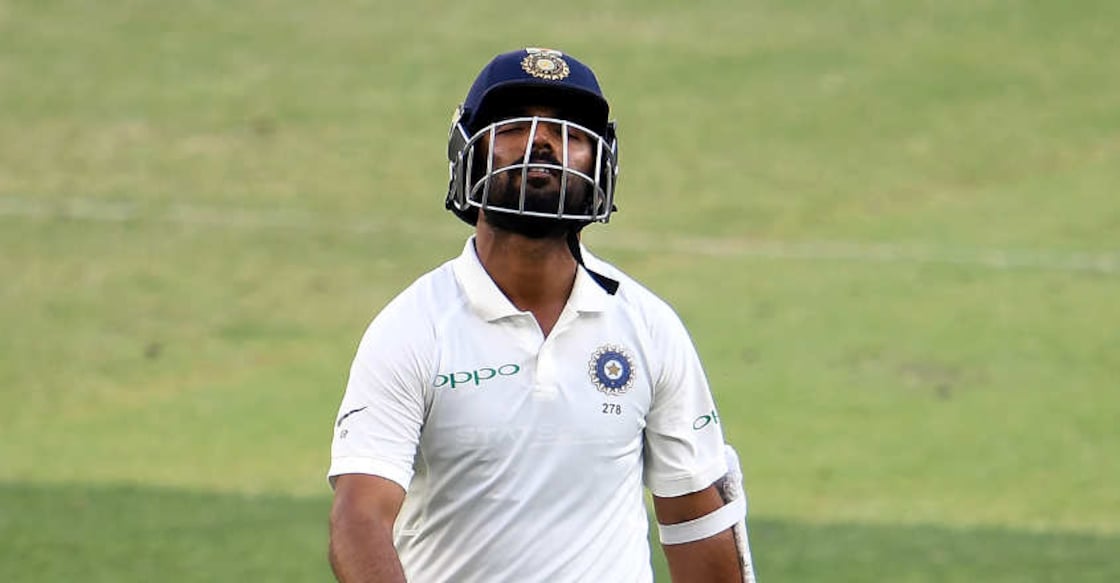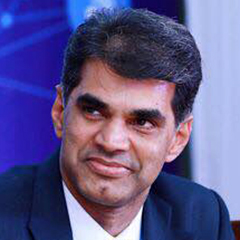A collective failure of the Indian batting unit

Mail This Article
The loss in the second Test of the ongoing series against Australia has sparked a volley of criticism aimed at the Indian cricket team. However, when one goes through the volley of harsh words, it is evident that most of it has been directed against the openers Murali Vijay and K L Rahul. Among the two, Rahul has been a favourite of the critics. With his string of low scores in the four innings of the present series and the preceding one against the West Indies at home, it is not surprising that many are doubting his ability survive at the highest level and score runs consistently. The team management, on its part, has supported the openers though it looks likely that one of them would give way for Mayank Agarwal, who has been flown in as replacement for the injured Prithvi Shaw, when the third Test commences on Boxing Day at the Melbourne Cricket Ground.
While it is true that Rahul has been having a horrendous series with the bat, is it fair to place the blame for the entire poor performance at his door? It is true that a good opening partnership lays the foundation for a decent total, as was demonstrated by the Australian openers in the first innings of the Perth Test, where, in the final analysis, what really separated the two sides was the stand of 112 between Aaron Finch and Marcus Harris on the opening day. Hence one cannot downplay the impact caused by poor batting of the openers, which tends to expose the Indian middle order to the Aussie quicks with the new ball in their hands. However, that would not explain the poor performance of other batsmen, some of them who threw away their wickets after settling down. Neither could it zero in on the failure of the all-pace attack to restrict the hosts to lower score than what they ended up making or the poor reading of the pitch that led to the selection gaffe of leaving out Ravindra Jadeja from the playing eleven.
Losing a Test without the total reaching 300 in either innings points to a batting failure. In the first innings, Indian batting was held together by a masterly century scored by skipper Virat Kohli, while in the second knock, there were no such heroics from either the captain or his mates and the side could not even cross 150-run mark. What was more surprising than the batting collapse was the fact that the bowler who reaped the biggest harvest was off spinner Nathan Lyon, who ended up with match figures of 8/106. And to rub it in, India had gone into the match without any frontline spinner in their playing eleven!
All this would indicate that the malaise that led to the loss is much deeper than poor batting by an opening batsman. While it is a typical Indian trait to pin down all the faults for a reversal on an individual and make him a scapegoat, such an approach would only serve to hide the true causes for the defeat. Hence it is imperative that rather than indulge in such self defeating ventures, one should try to analyse the causes of the loss in as objective a manner as possible, both to understand the real reasons as well as to develop a realistic appreciation of the potential and capability of the side.
Struggles against spin bowling
The first aspect that we should admit is that Indian batsmen are no longer tigers against spin bowling. There used to be a time when spinners used to dread the prospect of bowling to Indian batsmen who were bred on pitches aiding huge amount of turn and grew up facing world quality tweakers. Most of the Indian batsmen were adept at picking the spin of the ball from the hand of the bowler and they invariably possessed superb footwork which allowed them to reach the pitch of the delivery so that they could either smother the turn or use their supple wrists to place the ball through the gaps in the field. Bowlers such as Muttiah Muralitharan, Shane Warne, Abdul Qadir, who used to run through the best of batting line-ups in international cricket, usually came up with negligible returns when they confronted the Indian batsmen. However, things have changed so drastically that at present, no Indian Indian batsman, including Kohli, who is one of the best in contemporary cricket, is comfortable against good quality spin bowling. As Moieen Ali demonstrated not too long ago in England, even an average spin bowler, with a bit of help from a wearing wicket, can strike terror in the minds of willow wielders from India.
The present day Indian batsmen do not use their feet much; instead they prefer to stay rooted inside the crease and poke at the ball tentatively. They look for the turn and end up playing inside the line of the ball, thus offering catches in the slips or in close cordon. There are also instances when they try to hit out without reaching the pitch of the ball or gauging the amount of turn that the bowler is getting, which either sees them getting bowled through the gap between bat and pad or lobbing catches to the fielders stationed for mishits. The anxiety and apprehension created by the sight of a spinner on a turning track is so great that the general demeanour of the batsman changes into that of a cornered prey who knows that it would not survive for long. Bowlers know that they have a measure of the batsmen when they see such diffident body language and they capitalise on that without any mercy.
Dearth of quality spinners
The necessary corollary to the fact that Indian batsmen have become poor players of spin bowling is the undeniable truth that there is an absence of quality spinners in the domestic circuit. It is true that Ravichandran Aswin is among the best in contemporary cricket in the area of off spin bowling. But can anyone remember the last time he bowled in Ranji Trophy match? During the period leading up to the turn of the twenty first century when Indian batsmen were the best in the world against spin bowling, they used to play top drawer spinners in their backyard in domestic cricket. These days one hardly hears about any member of the national squad playing in domestic matches or performing there. Thus domestic cricket, barring the Indian Premier League (IPL), has been given the short shift by the Board of Control for cricket in India (BCCI) to such an extent that it has ceased to attract the attention of the players, the selectors and even the followers of the game in the country.
In fact the only spinner who made headlines of late was Varun Chakravarthy, unheard of till recently but who fetched a whopping Rs 8.4 crore in the IPL auction. Incidentally, he made his debut in Ranji Trophy only last month. However, a player like Jalaj Saxena, who has been scoring runs and claiming wickets consistently in the domestic four-day matches, finds it difficult to get a good price at the auction! This irony explains best when undue attention is being paid to the IPL at the cost of the rest of domestic cricket. Thus, when the domestic cricket system defines spin bowling as few overs of smart bowling in limited overs matches, it is not surprising that one finds very few talented spinners emerging from it who can bowl long, uninterrupted spells in longer duration matches. Unless the BCCI thinks in a proactive manner and comes up with a sound package for motivating players who specialise in cricket played with red ball, the scarcity in this regard is bound to continue.

Finally, Indian batsmen, with the possible exception of Cheteswar Pujara, appear to have forgotten that Test cricket is played over five days. There has been an inexorable tendency to rush the game by scoring quickly, even before getting one’s eye in and taking chances in a manner that would put an established punter to shame. The batting of Ajinkya Rahane in this series has been typical of this malady which has affected Indian batsmen of late. A steady run-getter when he started his career, these days Rahane appears to be in a great hurry whenever he steps on to the turf with the bat in hand. The shots that he played on the second day of the Perth Test when he managed to reach a half-century might have thrilled the crowd, but I am certain that any bowler would fancy his chances against a batman who plays the uppercut when a third man is positioned on the fence precisely for that shot. The lapse that cost him the wicket as soon as play resumed on day three and the stroke that led to his dismissal on fourth day when all hopes rested on his shoulders indicate that Rahane has forgotten the classic art of building an innings in a Test match. Hitting a stroke-filled fifty in quick time might help to win a few rounds of applause and save one’s place in the side, but would amount to nothing if it is not converted in to a big score that wears down the bowling and helps his side seize the initiative. Rahane needs to rediscover his original cricketing instincts that placed a huge premium on his wicket. Instead of indulging in batting harakiri, he should be guiding the youngsters and the lower order batsmen in the manner V V S Laxman used to do in the past.
India needs to work around these weaknesses if they are to bounce back and win the next two Tests. Though the Aussies can be expected to have a spring in their step after the win at Perth, they do not possess the overall strength and experience of the Indian side, which should continue to give the visitors a slight advantage, despite the setback. However, the BCCI should be careful and desist from allowing a win against the weak Aussie side to envelop the side in complacency. The deficiencies that have been identified are glaring ones that require urgent correction if India are to retain their current No. 1 ranking in Test cricket.
(The author is a former international umpire and a senior bureaucrat)


